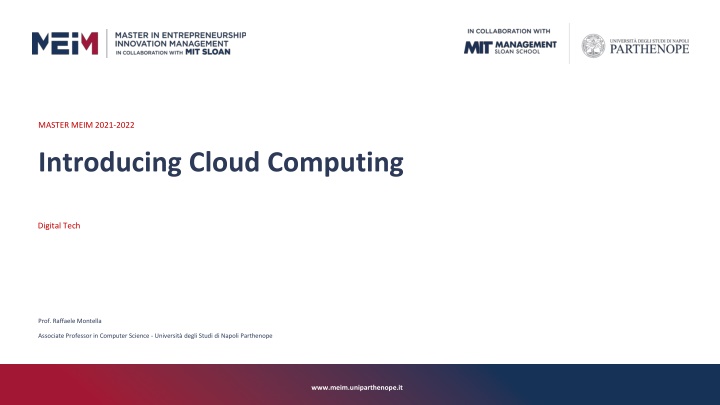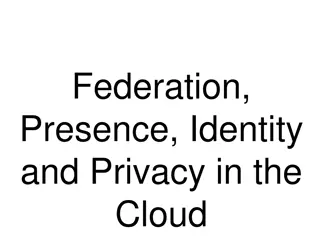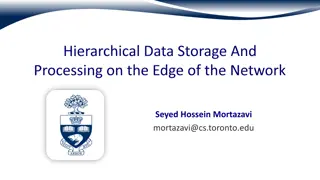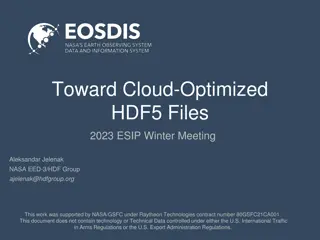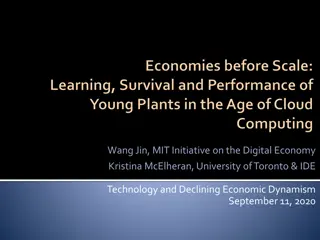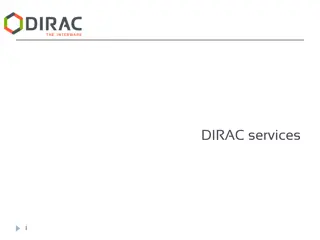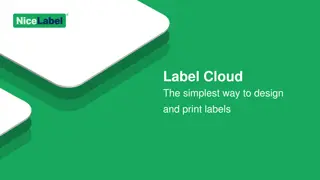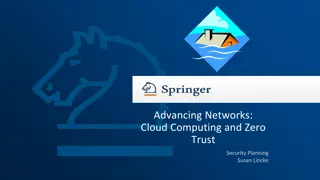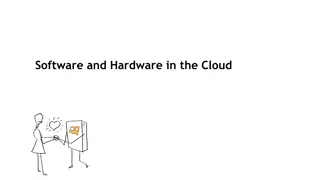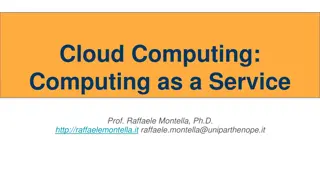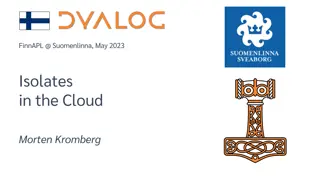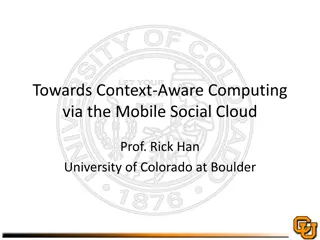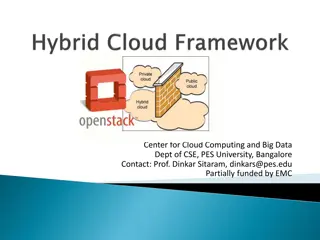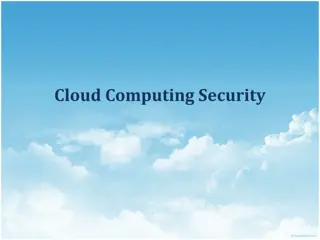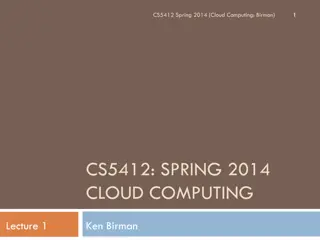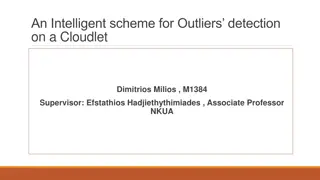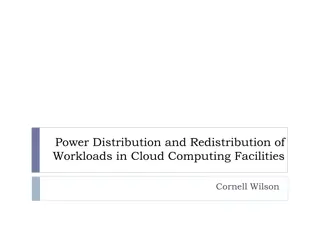Introducing Cloud Computing for Digital Tech Prof
Cloud computing allows on-demand access to computer resources like storage and computing power without direct user management. This technology enables scalable and cost-effective solutions, providing services through customized resources. The benefits include elasticity, scalability, on-demand computing power, and easy configuration. The cloud computing pyramid comprises Software as a Service (SaaS), Platform as a Service (PaaS), and Infrastructure as a Service (IaaS). It minimizes total cost of ownership and time to market, offering advantages like no initial infrastructure investments and pay-per-use models. Virtualization plays a key role in creating virtual versions of computer hardware and resources.
Download Presentation

Please find below an Image/Link to download the presentation.
The content on the website is provided AS IS for your information and personal use only. It may not be sold, licensed, or shared on other websites without obtaining consent from the author.If you encounter any issues during the download, it is possible that the publisher has removed the file from their server.
You are allowed to download the files provided on this website for personal or commercial use, subject to the condition that they are used lawfully. All files are the property of their respective owners.
The content on the website is provided AS IS for your information and personal use only. It may not be sold, licensed, or shared on other websites without obtaining consent from the author.
E N D
Presentation Transcript
MASTER MEIM 2021-2022 Introducing Cloud Computing Digital Tech Prof. Raffaele Montella Associate Professor in Computer Science - Universit degli Studi di Napoli Parthenope www.meim.uniparthenope.it
Definitions Cloud computing is the on-demand availability of computer system resources, especially data storage and computing power, without direct active management by the user. Large clouds are distributed over multiple locations. Edge computing: part of the user computation is offloaded on proximal servers.
What is Cloud Computing User User Computing and Storage infrastructure User User User Services provided by customized resources. On demand virtual machine instances, Geographically independent services pay as you go
The pyramid Software as a Service (SaaS) *as a Service A service is provided by an access point Platform as a Service (PaaS) Browser web. Programmatically (API) Value Infrastructure as a Service (IaaS)
Pros Elasticity Scaling On demand computing power On demand storage Effort Easy to configure and start Final users are decoupled from the infrastructure No need to buy, install and configure the infrastructure (*) No maintenance expenses
TCO, TTM Total Cost of Ownership On-cloud Business size On-premises Infrastructure costs Tempo JAN FEB MAR APR MAY JUN JUL AUG SET OCT NOV DEC Total Cost of Ownership minimization Fix costs to variable costs transformation Time To Market minimization (easy prototyping, scaling)
Pros What happens in case of provider failure? Costs No initial investments in infrastructure No over provisioning costs Pay per use Are data really private? Availability Redundancy Trust Data Backup Security
Virtualization the act of creating a virtual (rather than actual) version of something, including virtual computer hardware platforms, storage devices, and computer network resources. Virtual machine: the virtual hardware components supporting an operating system and applications.
Hypervisor Software component enabling virtualization (virtual machine monitor) Xen - https://www.xenproject.org (Linux, open source, root) VMBox - https://www.virtualbox.org (Linux, Win, OsX, open source, user) KVM - https://www.linux-kvm.org (Linux, open source, user) VMWare - https://www.vmware.com (Linux, Win, commerciale, user)
Virtualization Hardware Virtuale Immagine Image: persistent configuration of a virtual machine (as a just installed OS on a boot device). start Instance: an active virtual machine booted from an image. Appliance Instanza APP Snapshot Snapshot: a virtual machine persistent state. termi nate Appliance: a ready to use application installed on a virtual machine. stop
OS-level virtualization OS-level virtualization refers to an operating system paradigm in which the kernel allows the existence of multiple isolated user space instances. Container: fuller virtual machine environments operating in varying degrees of concert with the host OS (split-driver)
Storage File Storage: Data stored as a POSIX file system File Storage Block Storage: Virtual hard drive Connected to a virtual machine instance. File System Appliance Block Storage Instance APP Object Storage: Non structured data. URL identified. Database/Data warehouse: SQL NoSQL Object Storage
Autoscaling Computing and storage resources vary as the actual application needs. Load balancing Metrics Cost management
Microservices & lambda functions Applications made joining multiple services Easy to develop, easy to scare Time to Market minimization Easy maintenance, update, upgrade Lambda functions: the developer take care about the code, not the computing resource needed to execute the service.
Conclusions Cloud computing is more that just a paradigm . Now the correct question is not: What is/could be on the cloud But: What isn t The amount of computational resources needed to solve a problem is not an issue. Evaluate the cloud affordability is the real issue. It is profitable mastering cloud computing tools and resources in any Computer Science application scenario.
MASTER MEIM 2021-2022 That s all folks www.meim.uniparthenope.it
